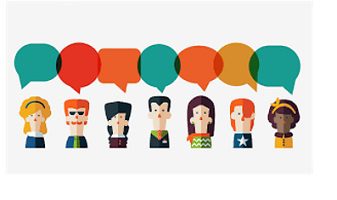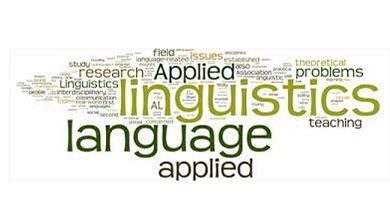Selective reading definition/characteristics/types and parts
Selective reading
Selective reading is to read specific parts of a text, is something concrete what information you want is selected. The main goal is to get a general idea of what the text is about. An example is, in a biography of Albert Einstein, reading only the titles of each chapter. Selective reading definition
Selective reading or pre-reading is the first phase of reading (together with reading and post-reading) and consists of activities that prepare the student for the reading that will follow. Through these activities the aim is to improve the comprehension of the text through the activation of the previous knowledge of the reader.
It also seeks to promote the formation of a general idea of the text and the planning of ways to face the reading activity. In addition to improving comprehension, the selective reading phase and the activities within it improve reading speed and accuracy, reducing time and effort.
Selective reading also clarifies to the student the objective of the reading. The type of activity chosen for this phase will depend on the teacher‘s criteria, the characteristics of the students and the type of text to be read. Selective reading definition
Some can be leafing through the text, identifying characteristics (title, author, photos, subtitles) or predicting what will be read, among others.
Selective reading characteristics
Selective reading activities are a kind of “warm-up” before reading, and they can be very different from each other. These activities can be differentiated by the duration and level of involvement they require from the student.
For example, showing students photos requires less involvement on their part than asking them to relate their experiences to what they think they will read. Using selective reading activities is helpful because:
- Stimulates students’ interest in the text, using the motivational factor to improve reading comprehension. This can be done through showing sensory input related to the text (music, pictures, etc.) or talking about your own experiences related to that text.
- Give a reason to read, as it is normal that students do not have an intrinsic motivation to do so. Through selective reading activities, readers may discover that the text can be read for pleasure, to search for specific information, or to discover something.
- It prepares the student for the language that they will encounter in the text, since it is normal that not everyone can fully understand the text, and this can make reading slower and require more effort. Because of this, selective reading activities can introduce key vocabulary, discuss the context of the reading, or other resources.
Parts of a selective reading activity Selective reading definition
Selective reading activities are divided into two parts:
- The part corresponding to the teacher
- The part corresponding to the students.
For example, in a pre-reading activity the teacher’s part may be to ask students about information they have read before; And the part that corresponds to the student may be to remember something that he has seen recently and to identify some characteristics of that particular text.
Types of selective reading
1-Graphic organizers
Graphic organizers are a type of selective reading activities that show a “map” of the text to follow, allowing readers to frame the text.
Using graphic organizers, you can teach complex vocabulary and demonstrate how the different ideas in the text are related to each other. Selective reading definition
There are many types of organizers, but in general they present the most important concepts in an outline, and identify the main terms to show readers relevant information before reading, and thus improve their reading comprehension.
2-Advance Guides Selective reading definition
The anticipation guides consist of a series of statements that the student must answer. In this way, the student is expected to respond to the statements independently in order to compare whether his previous beliefs about the text are correct.
Through this, it helps to give a meaning or an objective to the reading and the students are allowed to interact previously with the text.
In this way, anticipation guides improve comprehension by actively engaging readers in learning and by focusing on relevant concepts in the text.
The advance guides do not have to be used only in written format and can also be used orally, or with the necessary adaptations according to the age or ability of the readers.
3-History impressions
Story Impressions are selective reading activities in which students use key words or phrases from the story to write paragraphs that summarize their impressions. After this, students read the story and write another summary; a comparison is made below.
Through the impressions of the story you can predict what the reading will be about, which will improve reading comprehension. In addition, they can begin to process the text even before reading it, since they make connections before reading. Selective reading definition
4-Semantic mapping
It consists of a graphical representation that shows the prior knowledge of the readers and is used to create categories for the concepts. This activity helps readers search for prior knowledge that will be helpful in reading.
5-Identification of structure and relevant information
All text has a certain structure with relevant information, such as the author’s biographical note, publication information, and the index. In addition, each text can have titles and subtitles that give relevant information.
6-Visual material analysis
With this, they will focus on the visual or schematic part that the text may have to illustrate key concepts, main ideas, supporting information, among other elements.
It is common for school texts to have different categories of visual support that allow easier access to the content of the text.
7-Identification of main ideas
You can read the first and last paragraph or some intermediate sentence, as well as use the information in the structure to predict what the main idea of the text is and plan how long it will take to read.
8-Presentation of the text
The teacher makes a quick presentation of the text or topic to introduce students to their reading.
Selective reading examples
Let’s look at some examples of selective reading:
- Read a single chapter of a didactic book.
- Read only the subtitles of an article on a web page.
- Read only a specific section of a web page. (To read only the examples in this section would be to do a selective reading). Selective reading definition
- In an article about the giraffe, read only the reasons why it is in danger of extinction.
- In a book on global warming, inform yourself only about polluting gases.
- In a book about social networks, inform yourself only about its disadvantages.
- Read only the first few pages of a novel.
- Read only the notes in a book.
- Read only the index of a book.

